Cuba and Eusebio Leal, Historian of the City of Havana: Part I
A true hero in my life and work is Eusebio Leal, who passed away on July 31st. It is Leal who oversaw the restoration of Old Havana and its baroque and neoclassical monuments, colonial mansions, and much more. I am indebted to Eusebio Leal and have a personal story about him.
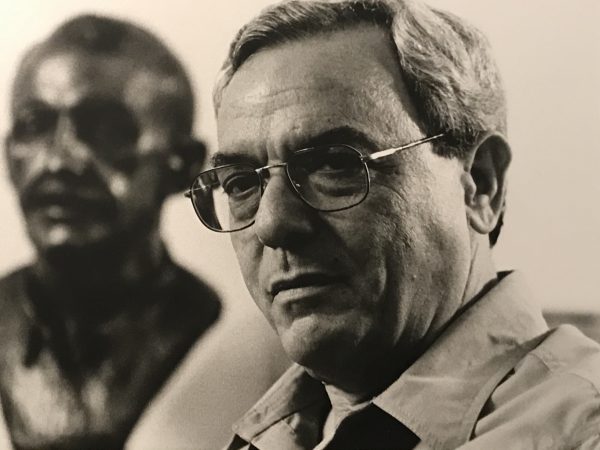
It was my great pleasure to present at Govinda Gallery in June of 2001 the first exhibition in Washington DC of the legendary Cuban photographer Alberto Korda, who took the epic photograph of Che Guevara, known as “Guerrillero Heroico.” The exhibition also included photos by Jose Figueroa, who was Korda’s printer and assistant.
After the exhibition was over, I went to Havana to return the exhibition prints to Fototeca de Cuba, Cuba’s national photo gallery in Old Havana at Plaza Vieja which had been restored by Eusebio Leal and his team of artisans and workers.
As I crossed the Plaza Vieja, carrying a box of Korda’s prints, I was overcome by the beauty and activity in the great plaza. It seemed to me Plaza Vieja was the ultimate example of “mixed-use architecture”, repurposing the stunning colonial buildings on the plaza with a school, multiple museums and galleries, cafes, residences, shops, and restaurants, with a grand fountain in the middle of it all. I was enlivened by the atmosphere created by the dynamic restoration of “the Old Plaza”.
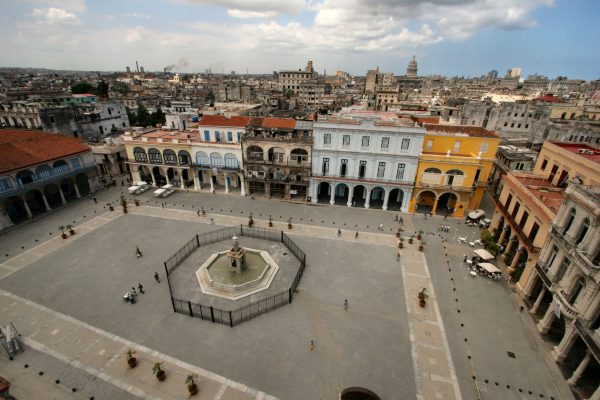
I was so moved that I was inspired to try and organize an exhibition there in Plaza Vieja at Fototeca de Cuba.

That stroll across the Plaza led to my presenting four photo exhibitions at Fototeca de Cuba: La Revolución Del Rock & Roll in 2002, Classic Baseball featuring Walter Iooss, Jr.’s photographs in 2004, John Lennon: Photographs by Bob Gruen in 2006, and Bob Dylan NYC 1961-1964 featuring photographs by Ted Russell in 2017.
I also presented an exhibition of the artist Carlotta Hester’s prints titled “Elemental Journey” in 2005 at Galeria del la Biblioteca Ruben Martinez Villena at Plaza de Armas, which Eusebio Leal also restored over a period of 11 years. It was a thrilling series of exhibitions on which I was able to collaborate with my colleagues at Fototeca de Cuba.
On one visit to Havana, I wrote a letter to Eusebio that I hand-delivered to his office in Old Havana, thanking him for his extraordinary work, and telling him how it inspired my work, presenting exhibitions in Cuba. Eusebio wrote me back the most gracious letter telling me that Havana was not just for the Cubans, but for me and everyone. Eusebio Leal’s work led to Old Havana being designated a UNESCO World Heritage Site.
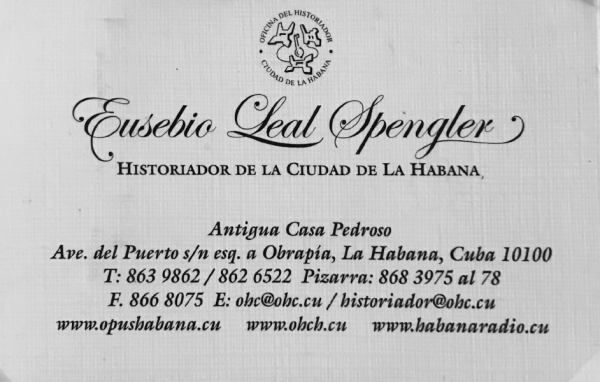
Here is a link to Eusebio Leal’s obituary in The New York Times, and below is the feature story from The Washington Post regarding the Korda exhibition at Govinda.

The Eyes of A Revolution
By Eugene Robinson
June 28, 2001
The first thing you notice, looking at the famous photographs of Fidel and Che and the rest of the bearded revolutionaries, is the enormous difference between conquering a country and running one.
In these images from 1959, taken by their court photographer Alberto Korda, just days or weeks after the triumph of the Cuban revolution, Fidel Castro and his lieutenants look more like boys than men, boys doing boyish things. They smile and mug. They preen for the camera. They are the victors, and this is their time. They are invincible.
Castro makes his grand entrance into Havana on a truck. He shakes hands with a grinning Ernest Hemingway. Castro and Che Guevara try their hand at golf and spend an afternoon deep-sea fishing. On his first trip to the United States, Castro looks a tiger in the eye at the Bronx Zoo. He stands at the base of the Lincoln Memorial and gazes up at the Lincoln statue, having removed his military cap as a sign of respect.
The images from 1962 are different. By then, whatever Castro is doing — revisiting the terrain of his guerrilla campaign in the Sierra Maestra, taking notes in a little pad, hunting with Nikita Khrushchev in the vast Russian cold — he no longer seems to live in the moment. His eyes are focused on a point somewhere out there, beyond the camera — focused on poverty, maybe, or the sugar cane harvest, or maybe the delivery date of a shipment of Soviet missiles. He has other things on his mind, and — from the sadness in his eyes — knows that he always will.
Thirty remarkable photographs from the infancy of Castro’s regime taken by Korda, who died May 25 at the age of 72, are on display at the Govinda Gallery in Georgetown through July 21.
Korda, born Alberto Diaz Gutierrez, was a fashion photographer who got caught up in the nationalistic and revolutionary fervor that swept Cuba after Castro took power on Jan. 1, 1959. His stylized images of glamorous models had begun to seem effete and useless, he said, after he looked into the eyes of a young girl so poor that her only plaything was a piece of wood, worn to smoothness, which she called her doll-baby.
Korda positioned himself in Castro’s inner circle and became a more or less official photographer, chronicling the early years of the revolution that seemed destined not only to remake Cuba, but the rest of Latin America as well.
He will always be famous for taking one of the best-known images of the century — “Guerrillero Heroico,” the iconic picture of Che Guevara with his long hair, his beard, his beret with the star, just Che in tight focus, shot from slightly below, against a featureless background. He looks fierce, he looks romantic, but most of all he looks like a man who belongs to a future that only he can see.
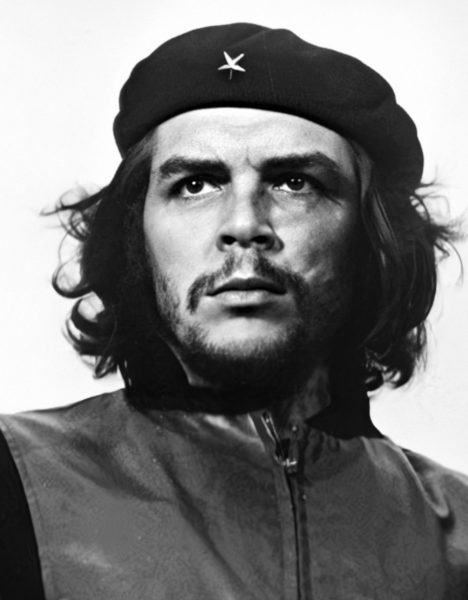
It is an image that has graced uncountable T-shirts, dorm-room posters and coffee mugs. And, as is the case with all his other revolutionary photographs, Korda never made a penny from his Che. The only time he went to court to assert his rights was last year, when a London-based ad agency tried to use “Guerrillero Heroico” to sell Smirnoff vodka. Korda said that was a slur on the “immortal memory” of a man who was certainly not a capitalist and who, in any event, hardly touched alcohol.
The photograph, taken at a memorial service in 1960, went unpublished and unnoticed until the late 1960s, when an Italian publisher happened to see it hanging in Korda’s Havana studio. He admired it, and Korda gave him two prints. A few months after that, Che was killed trying to foment revolution in Bolivia. The Italian realized what he had, and launched the worldwide dissemination of the image. He, as it happens, was a capitalist.
Several copies of the Che photograph are hung at Govinda, including one that shows the full frame. It turns out that Che-as-icon was the beneficiary of a good job of cropping. The full-frame version also shows the profile of an unidentified man intruding from the left, and a bit of foliage coming in from the right. With these elements, Che looks like a man. Without them, a Superman.
Despite what history might eventually conclude about Castro, or what Cubans might think of him now, some of these photographs are simply stirring, especially the ones with the multitudes.
It was a time for multitudes. The old dictator, Fulgencio Batista, was gone, and with him his thuggish policemen. No one knew much about this audacious Castro (Simone de Beauvoir and Jean-Paul Sartre were among the intellectuals who made the pilgrimage to Havana to check him out; Korda captured them too, chatting with Che), and no one really knew what he planned for the country.
Everything was possible, and the thing to do was go out into the streets and create a new world.
The best of the Korda photographs evoking this sense of the crowd in the act of creation is “The Quixote of the Lamppost.” A sea of people is marching toward the camera; only one of the signs they are carrying is readable, and it calls for “Reform.” Amid this immense crowd, a man has climbed a lamppost and sits at the very top. His legs dangle; he wears rough work boots. His undershirt is soaked with sweat. His straw hat bears a tiny Cuban flag. The message is that somehow he made it to that impossible perch, against considerable odds, because he believed. Simply because he believed.
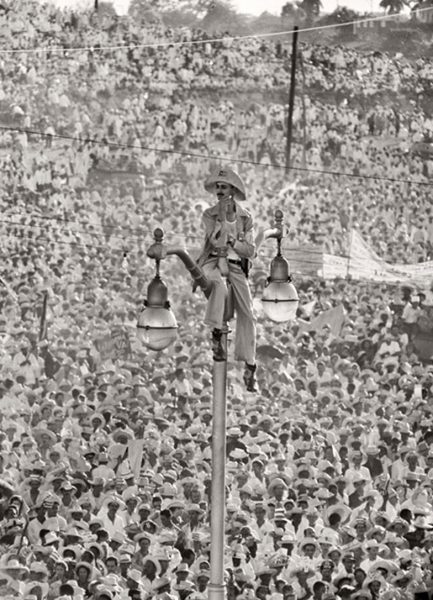
Reforming and running a nation turned out to be much more than a matter of simple conviction. But Korda believed until he took his last breath. He was buried in Havana on May 29.
“Guerrillero Heroico,” Alberto Korda’s famous image of Castro cohort Che Guevara, was taken in 1960.Caught up in the Castro fervor, Alberto Korda focused on capturing the promise of Cuba’s revolution. At left, a picture of a little girl from 1959 and, below, “The Quixote of the Lamppost,” part of the Korda exhibit on view at the Govinda Gallery through July 21.